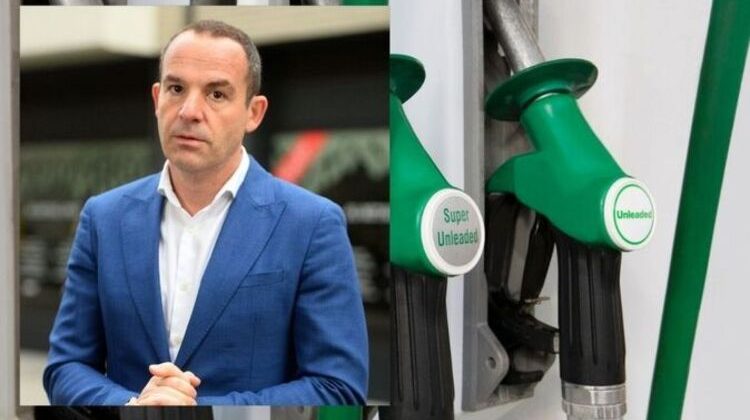Martin Lewis gets emotional over energy crisis 'frustration'
We use your sign-up to provide content in ways you’ve consented to and to improve our understanding of you. This may include adverts from us and 3rd parties based on our understanding. You can unsubscribe at any time. More info
Money Saving Expert Martin Lewis was close to tears on BBC radio yesterday as he discussed the messages he gets from those struggling to afford the increases in energy bills. And his website has issued five pieces of advice to drivers as petrol prices stay at record levels.
Despite the Chancellor cutting 5p from fuel duty in a Spring statement two weeks ago, FairFuelUK have said profiteering is continuing with some forecourts around the UK not yet lowering their petrol and diesel prices.
In March, the wholesale price of petrol increased by four percent, yet pump prices went up by nine percent.
FairFuelUK claimed that wholesale profit in pence per litre climbed by 69 percent.
Mr Lewis’ fuel saving tips are below and range from fuel efficiency to better driving style.

Make your car more fuel-efficient
Some simple checks and adjustments to your vehicle can help reduce fuel consumption.
In order to save anything up to 30 percent on fuel, drivers should keep their tyres inflated, remove roof racks, turn off air conditioning at lower speeds and only use cruise control on motorways.
It’s advisable only to fill the tank up halfway with petrol, or as much as you need for a journey and also remove anything unnecessary from inside the car or the boot.
The key is to reduce stress on the engine and improve aerodynamics.
Drive more efficiently
You can drive the same distance in the same car, without slowing down, but using less fuel – better for your wallet, better for the environment. The key is to drive smoothly.
Accelerate more gradually and don’t brake as hard – leave plenty of room to the car in front.
If you drive a manual then change up a gear sooner and don’t coast in neutral, this is dangerous.
Always be aware of your road position and plan ahead to avoid sudden manoeuvres which will use more fuel.

Find the cheapest petrol or diesel prices in your area
The easiest way to find the cheapest forecourt in your area for petrol, diesel, super unleaded or premium diesel is by comparing prices using petrolprices.com.
Also use loyalty schemes, £30 a week is over £1,500 a year. As many petrol stations run some form of loyalty scheme, it’s worth signing up to schemes for the forecourts you’ll use most regularly to get a little bit extra back.
In terms of filling up, always fill up at least 50 miles before the tank runs out to avoid panic buying at the first available petrol station.
And don’t try to put more fuel in once the pump has ‘clunked’ off – it adds weight to the car.
Pay using a cashback credit card
Cashback credit cards pay you back each time you spend on them. They are a great way to shave the cost of your fuel.
But always set up a direct debit to repay the card in full each month, so you never pay interest, which would outstrip any gain.
However Multiple applications in a short period can impact your future ability to get credit.
And in terms of direct debits, some providers deliberately omit the ‘pay off in full’ option from direct debit forms, as it makes them less money. If that’s the case, write ‘pay off in full’ on the form.

Share the driving to cut your petrol costs
An easy way to cut petrol costs is to drive less! One option is to share lifts to work with friends.
There are a few websites that connect people doing the same journey, including Liftshare and BlaBlaCar.
However safety is paramount. Arrange to meet for the first time in a public place, let friends or relatives know what you’re doing and check their ID to ensure they are who they say they are.
If offering a lift to a passenger and asking for a contribution towards fuel costs, the Association of British Insurers says that provided there’s no element of profit, your car insurance is unlikely to be affected.
Of the driving tips, Mr Lewis said: “On an overseas holiday I got to test this, thanks to a sexy little digital display in my hire car which gave me a km/litre readout.
“For every trip, I drove normally on the way there and used the ‘think when pressing the pedal’ method above on the way back.
“The improvement was enormous.
“Overall, I drove about 500 miles, and the different ‘efficiency’ averages per litre of petrol were incredible: for normal driving, it was 11.2km per litre, but for efficiency-conscious driving, a remarkable 13.4km per litre.”
Source: Read Full Article
